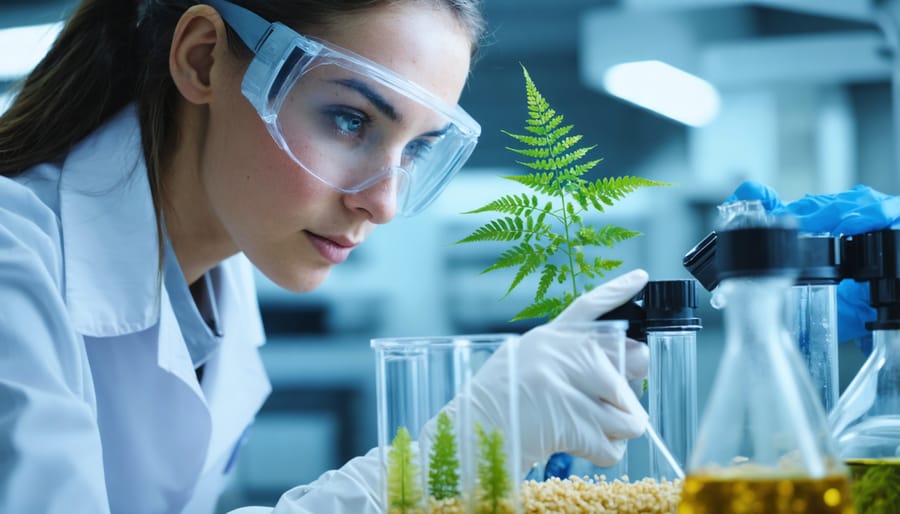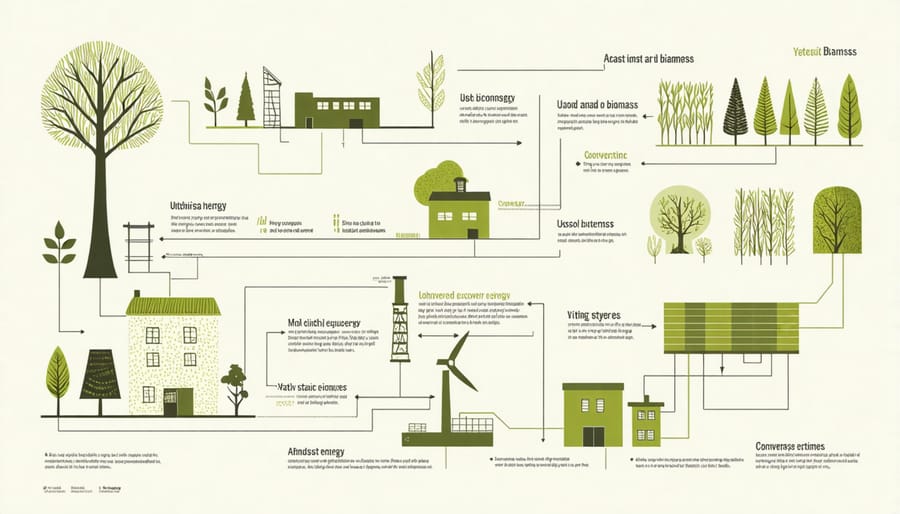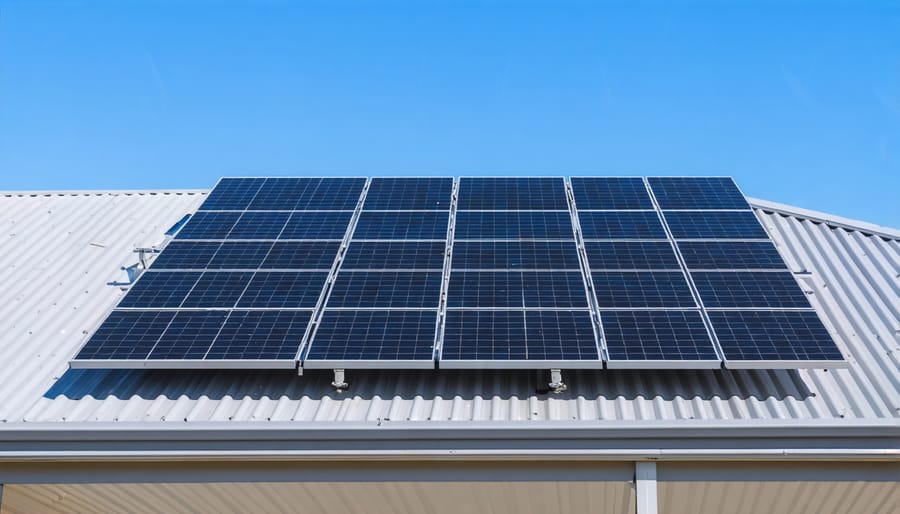Imagine a world where sustainable energy powers our homes, businesses, and communities. The Bioenergy Innovation Center is leading the charge in making this vision a reality for Australia. By harnessing the untapped potential of organic waste, this cutting-edge facility is pioneering groundbreaking technologies that convert biomass into clean, renewable energy. Through rigorous research, collaborations with industry partners, and a commitment to environmental stewardship, the center is not only reducing our reliance on fossil fuels but also creating new economic opportunities and jobs in the green energy sector. From developing advanced biofuels for transportation to designing efficient biomass power plants, the benefits of bioenergy are far-reaching and transformative. As we face the urgent challenges of climate change and energy security, the Bioenergy Innovation Center stands at the forefront of our transition to a more sustainable, resilient future. Join us on this exciting journey as we explore the incredible possibilities of bioenergy and discover how this innovative center is shaping Australia’s path towards a greener tomorrow.
What is Bioenergy?

Biomass Sources
The Bioenergy Innovation Center explores a wide range of biomass sources to create sustainable energy solutions. Agricultural residues, such as sugarcane bagasse, cereal straw, and tree prunings, are abundant in Australia and can be converted into bioenergy. Forestry residues, including wood chips and sawdust from timber processing, also serve as valuable feedstock. The center investigates the potential of dedicated energy crops like switchgrass and miscanthus, which can be grown on marginal lands unsuitable for food production. Additionally, organic waste from households, restaurants, and food processing facilities is being transformed into biogas through anaerobic digestion. By harnessing the power of these diverse biomass sources, the Bioenergy Innovation Center is paving the way for a more sustainable future, reducing reliance on fossil fuels and minimizing waste. Through innovative technologies and collaborative research, the center is unlocking the untapped potential of Australia’s biomass resources to create clean, renewable energy for generations to come.
Bioenergy Conversion Processes
The Bioenergy Innovation Center explores various processes to convert biomass into clean, usable energy. Thermochemical methods like combustion, gasification, and pyrolysis heat biomass to produce energy-rich gases or bio-oils. Biochemical processes, such as anaerobic digestion and fermentation, use microorganisms to break down biomass into biogas or ethanol. Chemical processes, including transesterification, create biodiesel from plant oils or animal fats. The center also investigates innovative technologies like hydrothermal liquefaction, which uses high-pressure water to convert wet biomass into bio-crude oil. By optimizing these processes and developing new ones, the center aims to make bioenergy more efficient, cost-effective, and environmentally friendly for Australian communities and industries. Through collaboration with local farmers, foresters, and waste management facilities, the center is working to create a sustainable bioenergy ecosystem that supports the nation’s transition to a low-carbon future.

The Bioenergy Innovation Center’s Mission
Research and Development
The Bioenergy Innovation Center is at the forefront of research and development in advancing cutting-edge bioenergy technologies. Our dedicated team of scientists and engineers works tirelessly to explore new ways of harnessing the power of organic matter to generate clean, renewable energy. From improving the efficiency of biomass conversion processes to developing novel methods for producing biofuels and biogas, our R&D efforts are driving the future of sustainable energy in Australia. We collaborate with leading universities, industry partners, and government agencies to ensure our research translates into practical solutions that can be implemented on a large scale. Our state-of-the-art facilities and innovative approach to problem-solving have already yielded promising results, such as the development of a new technique for converting agricultural waste into high-quality biofuel. As we continue to push the boundaries of what’s possible in bioenergy, we remain committed to finding sustainable solutions that benefit both people and the planet.
Collaboration and Partnerships
The Bioenergy Innovation Center fosters strong partnerships with industry leaders, government agencies, and academic institutions to drive the adoption of bioenergy solutions. By collaborating with renewable energy companies, the center accelerates the commercialization of cutting-edge technologies. Government partnerships ensure that regulatory frameworks support bioenergy growth, while academic alliances focus on research and workforce development. For example, the center’s recent partnership with a leading university led to the creation of a bioenergy engineering program, equipping the next generation with the skills to shape Australia’s sustainable future. These collaborative efforts create a powerful ecosystem that propels bioenergy innovation forward.
Bioenergy Applications in Australia

Residential and Commercial Use
Bioenergy is a versatile and renewable energy source that can power both residential homes and commercial businesses. In Australia, an increasing number of households are turning to bioenergy solutions like biomass boilers and biogas digesters to heat their homes and generate electricity. These systems not only reduce reliance on fossil fuels but also provide a sustainable way to manage organic waste. For businesses, bioenergy offers a reliable and cost-effective alternative to traditional energy sources. Companies can install biomass-fueled combined heat and power (CHP) plants to generate both electricity and thermal energy for their facilities, reducing energy costs and carbon emissions. The Bioenergy Innovation Center works closely with residential and commercial clients to develop tailored solutions that meet their specific energy needs while maximizing environmental benefits. By embracing bioenergy, homes and businesses across Australia can play a crucial role in the transition to a more sustainable future.
Industrial Applications
The potential for bioenergy to transform industrial processes and reduce their carbon footprint is immense. By harnessing the power of organic waste and converting it into clean energy, industries can significantly decrease their reliance on fossil fuels. Bioenergy solutions, such as biomass boilers and anaerobic digesters, can be integrated into various sectors, including manufacturing, agriculture, and food processing. These technologies not only provide a sustainable energy source but also help manage waste effectively. In Western Australia, a groundbreaking bioenergy project is demonstrating the feasibility of large-scale bioenergy plants in powering industrial operations. By embracing bioenergy, industries can reduce their environmental impact, lower energy costs, and contribute to a circular economy. The Bioenergy Innovation Center plays a crucial role in facilitating the adoption of these solutions by providing expertise, research, and collaborations to help industries transition to a sustainable future.
Biofuels for Transportation
Biofuels, such as ethanol and biodiesel, are increasingly being used to power vehicles in Australia and around the world. These renewable fuels, derived from plant materials and waste products, offer a cleaner alternative to traditional fossil fuels. By reducing greenhouse gas emissions and dependence on imported oil, biofuels contribute to a more sustainable transportation sector. The Bioenergy Innovation Center is at the forefront of research and development efforts to improve the efficiency and cost-effectiveness of biofuel production, making it a viable option for both private and commercial vehicles. As more Australians embrace biofuels, we can look forward to a greener future on our roads.
Benefits of Bioenergy for Australia
The adoption of bioenergy in Australia offers numerous benefits that contribute to a more sustainable and prosperous future. By harnessing the power of organic matter, bioenergy significantly reduces carbon emissions compared to fossil fuels. In fact, with the right strategies and technologies, Australia has the potential to achieve zero carbon emissions by 2050. Bioenergy also enhances energy efficiency, as it allows for the utilization of waste materials that would otherwise be discarded, creating a circular economy and minimizing waste.
Moreover, the bioenergy industry has the potential to create thousands of new jobs across Australia, particularly in regional and rural areas. From farmers growing energy crops to engineers designing cutting-edge bioenergy facilities, the sector offers diverse employment opportunities. These jobs not only support local communities but also contribute to the country’s overall economic growth.
By investing in bioenergy innovation, Australia can position itself as a global leader in renewable energy, attracting international investment and collaboration. The development of a strong bioenergy sector also reduces Australia’s reliance on imported fossil fuels, enhancing energy security and stability. As the world moves towards a more sustainable future, embracing bioenergy will ensure that Australia remains at the forefront of this transformative journey, reaping the environmental, social, and economic benefits for generations to come.
Overcoming Challenges and Looking Ahead
Despite significant advancements in renewable energy, Australia still faces challenges in fully transitioning away from fossil fuels. Currently, renewable sources account for only around 24% of Australia’s total electricity generation. The Bioenergy Innovation Center is committed to increasing this share by developing cutting-edge bioenergy solutions that are both environmentally friendly and economically viable.
Through its research, partnerships, and public outreach, the center aims to overcome barriers such as the need for more efficient conversion technologies, improved supply chain logistics, and increased public awareness about the benefits of bioenergy. By collaborating with industry leaders, policymakers, and local communities, the Bioenergy Innovation Center is working to create a sustainable future where bioenergy plays a crucial role in Australia’s energy mix.
As the center continues to make strides in bioenergy innovation, it inspires a new generation of scientists, entrepreneurs, and environmentally conscious individuals to join the cause. With ongoing support and investment in research and development, Australia has the potential to become a global leader in sustainable energy solutions, paving the way for a greener, more prosperous future.

